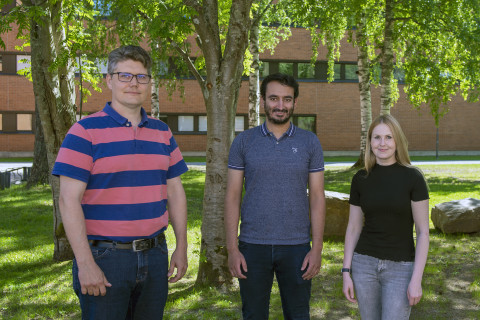Laboratory work in photonics is now being developed in collaboration with photonics industry companies.
“Last year, some of our traditional laboratory exercises were replaced by collaboration with companies operating in this field,” says Project Coordinator Kirsi Ikonen of the Department of Physics and Mathematics at the University of Eastern Finland.
Already during their studies, Master’s level students of photonics get to solve real-life research problems faced by companies, while also gaining important working life skills.
“Entering the world of work after graduation can be tough. We also want to examine the role of this kind of collaboration between higher education and companies: will it help in the retention of international talent in Joensuu and in Finland?”
According to Ikonen, collaboration with companies has been smooth. For a few students, it has also led in internships, real jobs and thesis topics, creating real networks between companies and students.
Students get to solve small-scale research problems that companies have been struggling with for a long time. The project involves several companies in the field of photonics and optics.
“As an assignment from Nanocomp Ltd., students have compared the properties of polymer films used in the manufacture of light guides. For the optical shooting system company Eco-Aims Ltd., students have examined the laser diodes used by the company, and for Oplatek Ltd., they have focused on phenomena related to the quality assurance system of optical fibre,” Ikonen explains.
Dispelix Ltd., wanted to teach students especially process analysis methods that are driven by data.
“University education provides a very good level of competence in photonics. In companies that manufacture consumer products or components, the focus is often on the quality of the process, since the goal is to provide the customer with the best or at least with a good enough product for their intended use. Words such as ‘yield’, ‘process error’ and ‘quality’ keep coming up. By combining research training with data-driven process and quality analysis, we can create a comprehensive skill set that also caters to the needs of the manufacturing industry,” says VP of Manufacturing & Site Manager Petri Stenberg.
“Students have been very enthusiastic about the topic. Many have given feedback saying that after the assignment, they see their own work in the laboratory in a whole new light. It’s been great to see how well the world of business and academic education go together.”
The academic and the business side of things definitely complement one another.
Petri Stenberg
VP of Manufacturing & Site Manager, Dispelix Oy
Knowledge and skills in photonics for real-life use
Mamoona Zaheer, a Master’s student in photonics, has worked in project assignments for three companies.
“I was given an opportunity to be involved in finding solutions and contributing to actual projects in photonics, and it felt good putting classroom learning to good use. Having a sense of contribution was encouraging, and I learned how to use several pieces of laboratory equipment. Especially working in a clean room was very exciting,” Zaheer says.
According to Zaheer, the TE-Lab project helped her to get in touch with people working in these companies, and it helped her to get an internship at Dispelix, which was a great opportunity. Learning both the technical and the corporate aspects of a company helps to figure out which field in photonics one would like to pursue further.
“It was a great opportunity to work with photonics companies for laboratory work during my Master’s level studies,” says Hasan Riaz, thanking Ikonen for arranging the project.
According to Riaz, it rarely happens that a Master’s student gets a chance to have a conversation with the managers of companies and present their own work. In fact, Riaz got his first corporate job thanks to the project, as he was introduced to Dispelix for lab work.
“Petri Stenberg gave an introduction to the company and explained the student assignment. Upon completion of the assignment, we presented our work to him. When I was about to graduate, I contacted the company about prospective jobs, and currently I am working as a Process Engineer at Dispelix.”
“Collaboration with companies is now a permanent element in our laboratory training. We also want to expand this activity to other companies that could benefit from applications of photonics and measurement methods,” Ikonen says.
“The new Photonics Center in Joensuu helps us in establishing networks with different companies.”
The two-year project for working life oriented laboratory work is funded by the European Social Fund.




